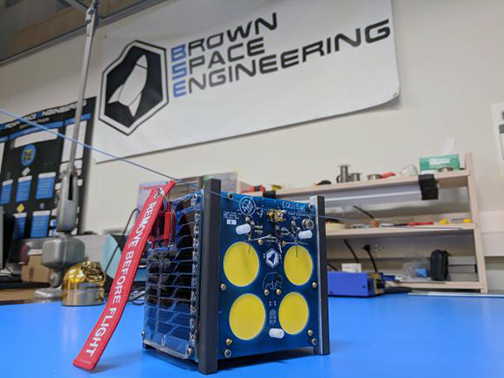
Friday, July 13, marked a major milestone for current and former members of Brown Space Engineering, a student group at Brown University that has spent the past seven years designing and building a smallsat.
That satellite, dubbed EQUiSat, deployed from the International Space Station and, soon after egress, the satellite transmitted telemetry data to ground stations on Earth from an orbit roughly 250 miles in altitude.

Brown Space Engineering's EQUIsat smallsat.
Photo is courtesy of Brown Space Engineering.
The deployment marks the culmination of work that started with a handful of undergraduates in 2011. Since then, a rotating group of students, which has now grown to around 90 in total number, have kept the project on track: submitting proposals to NASA for launch, designing the spacecraft and making sure all of its systems work properly. The satellite was launched to the ISS in May aboard an Antares rocket that lifted off from Wallops Island, Virginia.
Post deployment, a small electrical pulse will burn through a thin wire that holds down that satellite’s antennae. With the antennae deployed, EQUiSat started transmitting data on its position and the status of its systems.
EQUiSat’s primary mission is educational: to engage the public in space technology and remind people that access to space isn’t just limited to governments and corporations. Brown students plan to work with K-12 educators to build lesson plans that involve helping students track the satellite and understand how it works. The satellite is equipped with four LED beacons that will make brief nighttime flash patterns that can be seen from Earth with the naked eye.
The LED flashes won’t begin until EQUiSat’s batteries are fully charged by the solar panels arranged on the spacecraft’s outer shell. That's expected to take a few days. The Brown Space Engineering website will have information about when flashes will be visible over Rhode Island.
The satellite is expected to remain in orbit for one to two years before eventually burning up in the atmosphere.

